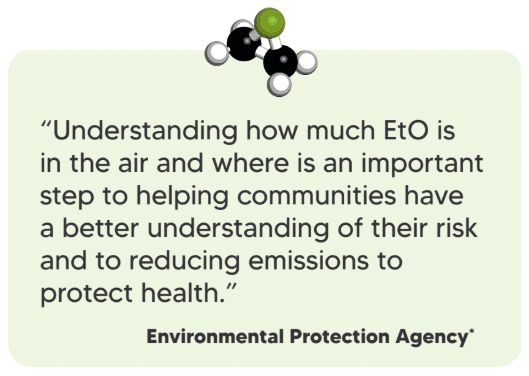Montrose and Thermo Fisher Scientific: A Coordinated Approach
Why Thermo Fisher?
Sensible EDP and Thermo Fisher Scientific have partnered to deliver a comprehensive solution for organizations tackling ethylene oxide (EtO) monitoring and compliance. This collaboration combines cutting-edge technology with unparalleled expertise, offering significant benefits to companies:
- Long-Term Reliability: A partnership between two publicly traded companies ensures stability and enduring support.
- Sterilizer Industry Expertise: Decades of experience in EtO monitoring and compliance.
- Comprehensive Services: Montrose’s regulatory, installation, and support services seamlessly integrate with Thermo’s advanced equipment technology.
- Rapid Response: Extensive networks of field staff from both companies ensure timely equipment servicing and maintenance.
- Regulatory Compliance: Solutions that meet or exceed NESHAP, PS-19, PID, Rule 1405 , and other EPA standards.


Monitoring Benefits

User-Friendly Design
- Automated QA/QC procedures for daily validation (EPA Procedure 7).
- Maintenance alerts and remote control for optimal usability.
- Integrated reporting software that meets regulatory standards, providing users with quantified data, trends, and alarm statuses.

High Reliability
- Over 99% uptime surpasses NESHAP’s 90% requirement.
- Designed for both inlet and stack monitoring with robust components like a Peltier-cooled MCT detector and 10+ year MTBF.

Preventative Maintenance
- Daily: Automated QA/QC validation checks.
- Quarterly: FTIR system audits, including detector linearity and filter replacements.
- Semi-Annually: Diaphragm replacements.
- Annually: Cleaning gas cell mirrors and replacing O-rings.
Thermo Max-iR Technology:Advanced FTIR Gas Analyzers
MAX-EMS-10™ OE-FTIR Continuous Emissions Monitoring System (CEMS)
MAX-iAQ™ OE-FTIR Continuous Monitoring System
MAX-iR™ Mobile Monitoring System
Supporting Evolving Regulatory Requirements
Our solutions are designed to address the demands of changing NESHAP standards and ID updates. We ensure continuous compliance with over 90% uptime requirements, provide detailed site-wide emissions data reporting to the EPA’s CEDRI platform, and deliver precision monitoring for both indoor and stack emissions to maintain safety thresholds and operational efficiency.
Ready to Enhance Your EtO Monitoring?
Experience the combined strength of Montrose and Thermo Fisher for reliable, user-friendly, and regulatory-compliant EtO monitoring solutions. Contact us today to explore how our partnership can transform your EtO monitoring.